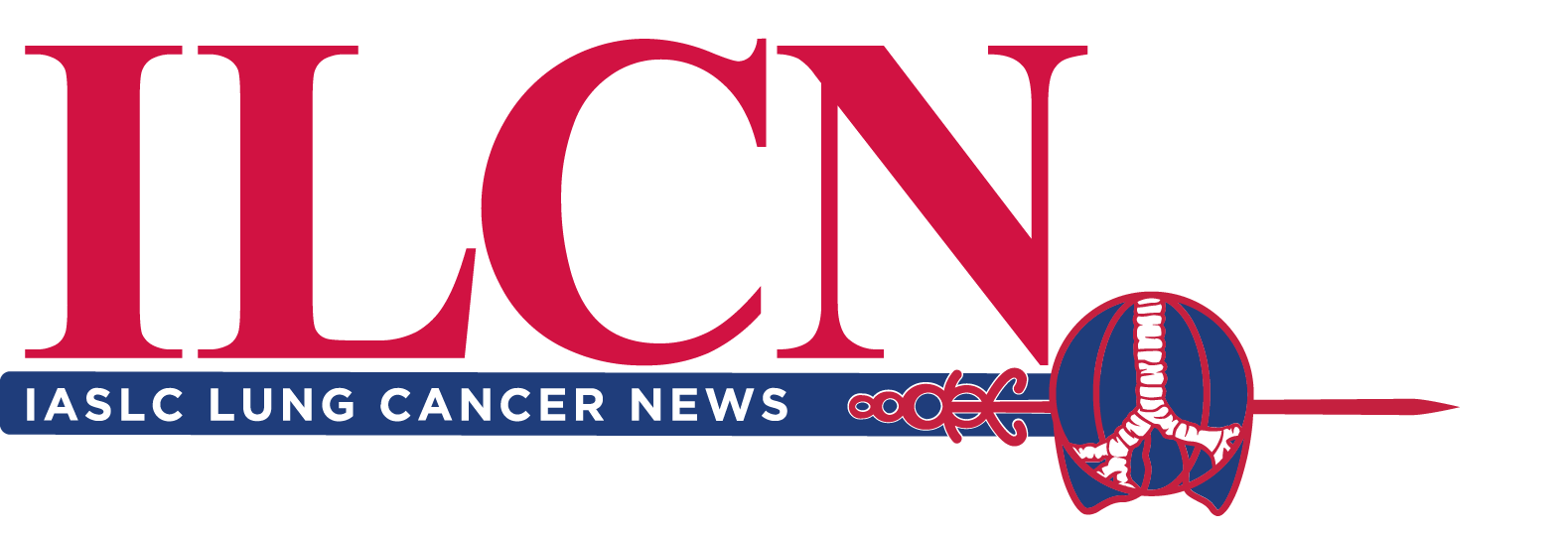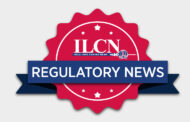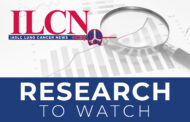Editor’s Note: This is Part 1 of a 2-part article exploring the myriad ways the environment and our changing climate affect thoracic oncology. Part 1 explores the increased vulnerability health systems—and their patients—face in the wake of growing threats from climate change and how environmental disasters disrupt cancer control activities. Stay tuned for Part 2 in the coming weeks.
In many ways, lung cancer epitomizes humanity’s struggles with understanding and taming cancer. As the first line of defense in the respiratory system, the pulmonary epithelium is constantly exposed to environmental toxins.1 In addition to teaching us about the mechanisms of carcinogenesis, this constant exposure is also a constant reminder of our dependence on a healthy environment. As the most commonly diagnosed cancer worldwide and the leading cause of cancer death,2 lung cancer pervasiveness also embodies the ubiquity of cancer. Similarly, the threats climate change pose to cancer control activities remind us of our interdependence with our environment and the inescapability of climate hazards.

How does climate change threaten cancer control activities? Climate change is altering the frequency and behavior of extreme weather events, exposing communities and healthcare systems to unfamiliar environmental hazards and increasingly unpredictable disaster circumstances.3 For example, warmer air holds more water vapor, which increases the water capacity of tropical storms. When climate-driven storms dump record-breaking amounts of rain in unprepared communities, the ensuing hazards (e.g., floods, prolonged power outages) can have severe consequences, especially among vulnerable populations.4 Therefore, climate change threatens cancer control by making it harder for the healthcare system to function during climate-driven extreme weather events due to increased demands and disruptions in care.
Increased Vulnerability to Climate Hazards
Lung cancer exemplifies how a cancer diagnosis can increase vulnerability to climate hazards. There are three factors that determine vulnerability to climate hazards: exposure, sensitivity, and adaptive capacity. Exposure is the human contact with climate hazards, sensitivity is the degree to which climate hazards impact humans, and adaptive capacity is the ability to cope with climate hazards.5
The physical, psychological, and socioeconomic consequences of lung cancer progression, treatment, and survivorship can increase sensitivity and reduce the adaptive capacity of individuals, therefore increasing vulnerability to climate hazards. Take lung cancer surgery, for example. Patients recovering from lung cancer surgery who are exposed to a wildfire after being discharged from the hospital have worse mortality than unexposed patients.6 There are several ways through which the hazards of wildfires interact with the vulnerability of individuals recovering from lung cancer surgery to increase mortality risk.
First, consider the several physical (e.g., respiratory system strain, mobility difficulties), psychological (e.g. changes in cognitive functioning, increased stress), and socioeconomic (e.g., healthcare costs, changes in employment) challenges experienced by patients recovering from lung cancer surgery.6
Then, consider the hazards posed by wildfires, which include risk of injury (e.g., burning, collapsing infrastructure), air contaminated with smoke, water and soil contaminated with toxic byproducts of burned vegetation and human-made infrastructure, psychological challenges inherent to dealing with rapidly moving threats (e.g., stress, anxiety), and social erosion.7 Importantly, wildfire activity is increasing with climate change in several regions of the world.8
Now, consider how the challenges faced by patients recovering from lung cancer surgery interact with the hazards posed by wildfires, including being exposed to contaminated air, water, and soil while recovering from major thoracic surgery, following evacuation orders while experiencing mobility and cognitive challenges, and/or being instructed to install special air filters while experiencing financial constraints, all of which can result in increased vulnerability and worse mortality.3
Importantly, surgery is not the only cancer treatment modality associated with increased vulnerability to climate hazards. Systemic therapy can also interfere with people’s physical, psychological, and socioeconomic health. Some chemotherapy agents, for example, can interfere with our bodies’ ability to regulate its temperature, increasing vulnerability to heatwaves,9 while others can weaken the immune system, increasing susceptibility to infections, which are a common health hazard during flooding events.3
Radiation therapy also has physical, psychological, and socioeconomic consequences that can increase vulnerability to climate hazards, with the added trouble of being the cancer treatment modality most susceptible to disruptions by extreme weather events, due to its reliance on electricity, the presence of specialized staff, and the daily schedule in which it is given.10
Disruptions in Cancer Control Activities
Climate-driven extreme weather events behave differently and frequently disrupt healthcare access. Climate-driven disruptions in lung cancer treatment illustrate how climate change threatens to undo some of the progress made in cancer treatment and survivorship care options, which substantially reduced the cancer burden in the population.
Radiation treatment is especially susceptible to the hazards of climate-driven disasters because it needs to be given daily. It requires both patients and the healthcare team to have access to the radiation therapy center, which in turn requires reliable electricity to function. Both transportation and electricity are frequently disrupted by climate-driven extreme weather events, which can result in radiation treatment interruption.
Gaps in radiation treatment are especially concerning for patients diagnosed with aggressive tumors, for whom even short treatment breaks can affect survivability. For example, patients impacted by a hurricane during radiation treatment for non-operable locally-advanced non-small cell lung cancer have worse mortality than similar patients treated at the same radiation treatment facilities, but at times when no climate-driven disasters happened.11
Climate-driven extreme weather events can damage medical infrastructure, break transportation links, disrupt supply chains, and interrupt access to potentially life-saving cancer care even when disaster strikes far from where care is being delivered. In 2017, Hurricane Maria damaged most manufacturing plants of the main supplier of small IV-bags in the continental US, resulting in a shortage that reached crisis levels.12 Then, in 2024, Hurricane Helene flooded the plant responsible for producing 60% of the IV-bag supply in the US, with similar detrimental consequences to healthcare operations.
Short- and long-term disruptions in healthcare services, due to damaged medical infrastructure, displacement, or shortages in medical supplies, are the main cause of long-term mortality in the months following a climate-driven disaster.13 People who rely on continuous access to prescription medication, medical equipment (e.g., oxygen tanks), or who are undergoing active cancer treatment, are especially vulnerable to the hazards of climate change.4
The threats climate change poses to cancer control activities are serious and urgent. Climate change is already here and its consequences are already measurable—no future projections needed. In the next article in the series, we will discuss potential solutions and action items available to us, some of which have cascading benefits for cancer control and public health. Stay tuned!
References
- 1. Burns E, Bernicker EH. (2023) Air Pollution and Cancer. In: Bernicker EH, ed. Environmental Oncology: Theory and Impact. Cham: Springer International Publishing. pp. 61-80.
- 2. Bray F, Laversanne M, Sung H, et al. (2024) Global cancer statistics 2022: GLOBOCAN estimates of incidence and mortality worldwide for 36 cancers in 185 countries. CA: A Cancer Journal for Clinicians. 74: 229-63.
- 3. Nogueira LM, Crane TE, Ortiz AP, D’Angelo H, Neta G. (2023) Climate Change and Cancer. Cancer Epidemiol Biomarkers Prev. 32: 869-75.
- 4. Shultz JM, Galea S, Espinel Z, et al. (2024) Safeguarding medically high-risk patients from compounding disasters. Lancet Reg Health Am. 32: 100714.
- 5. Balbus JM, Malina C. (2009) Identifying vulnerable subpopulations for climate change health effects in the United States. Journal of occupational and environmental medicine. 51: 33-7.
- 6. Zhang D, Xi Y, Boffa DJ, Liu Y, Nogueira LM. (2023) Association of Wildfire Exposure While Recovering From Lung Cancer Surgery With Overall Survival. JAMA Oncol.
- 7. Taparra K, Purdy M, Raphael KL. (2023) From Ashes to Action – Indigenous Health Perspectives on the Lāhainā Fires. N Engl J Med. 389: 1543-6.
- 8. Romanello M, Walawender M, Hsu S-C, et al. (2024) The Lancet Countdown on health and climate change: facing record-breaking threats from delayed action. The Lancet.
- 9. Hassan AM, Nogueira L, Lin YL, Rogers JE, Nori-Sarma A, Offodile AC, 2nd. (2023) Impact of Heatwaves on Cancer Care Delivery: Potential Mechanisms, Health Equity Concerns, and Adaptation Strategies. J Clin Oncol. Jco2201951.
- 10. Lichter KE, Baniel CC, Do I, et al. (2024) Effects of Wildfire Events on California Radiation Oncology Clinics and Patients. Adv Radiat Oncol. 9: 101395.
- 11. Nogueira LM, Sahar L, Efstathiou JA, Jemal A, Yabroff KR. (2019) Association Between Declared Hurricane Disasters and Survival of Patients With Lung Cancer Undergoing Radiation Treatment. Jama. 322: 269-71.
- 12. Nogueira LM, Yabroff KR, Bernstein A. (2020) Climate change and cancer. CA Cancer J Clin. 70: 239-44.
- 13. Kishore N, Marqués D, Mahmud A, et al. (2018) Mortality in Puerto Rico after Hurricane Maria. N Engl J Med. 379: 162-70.





